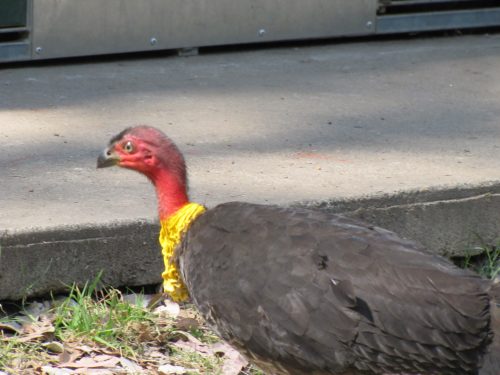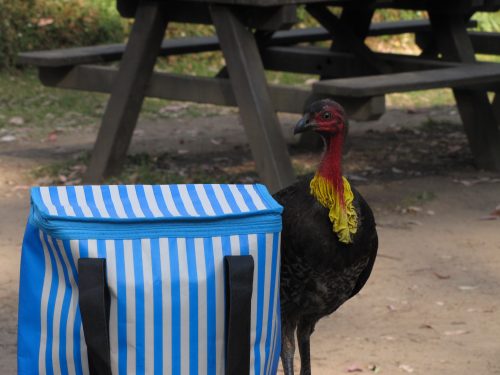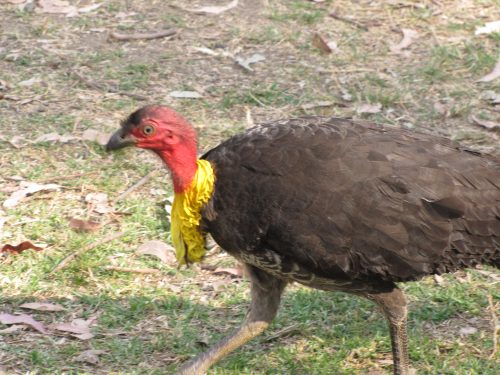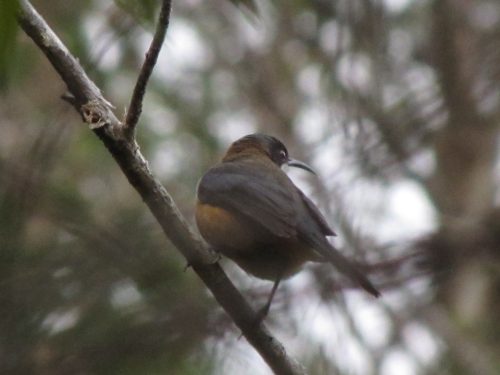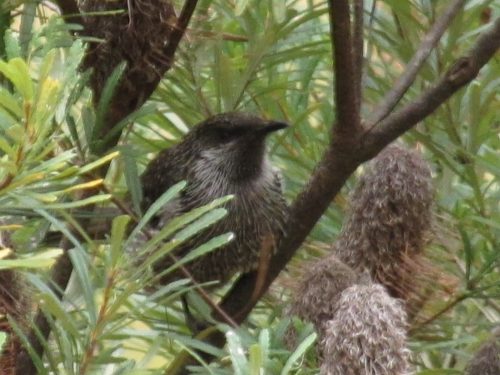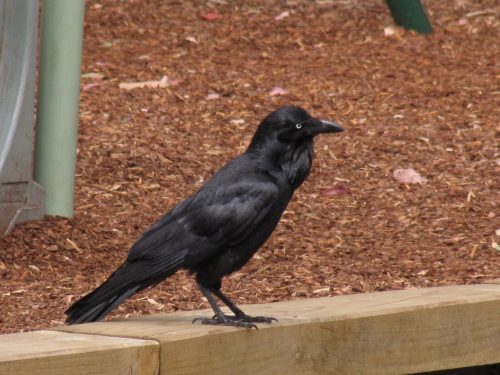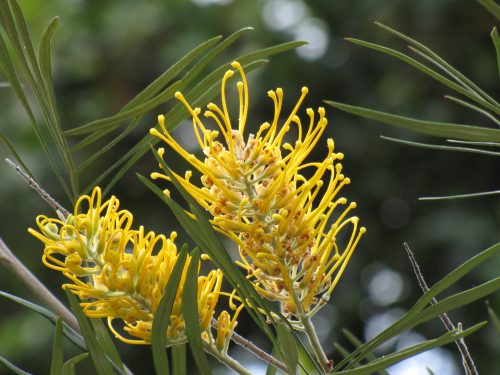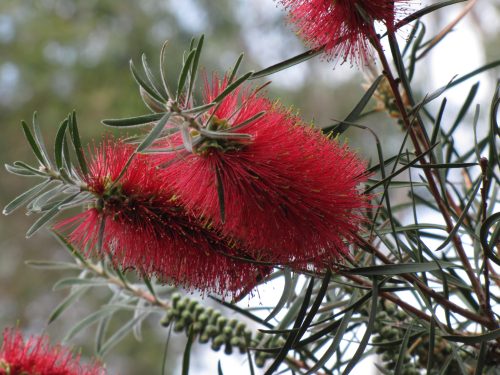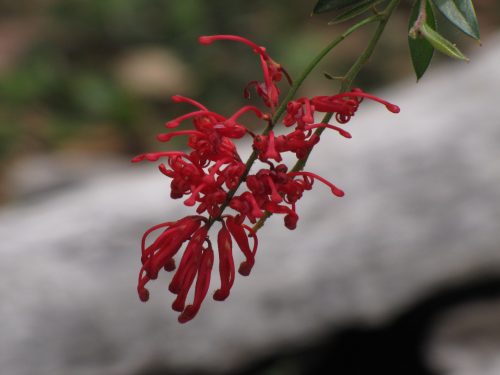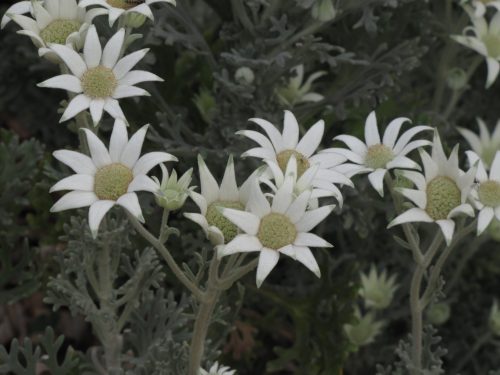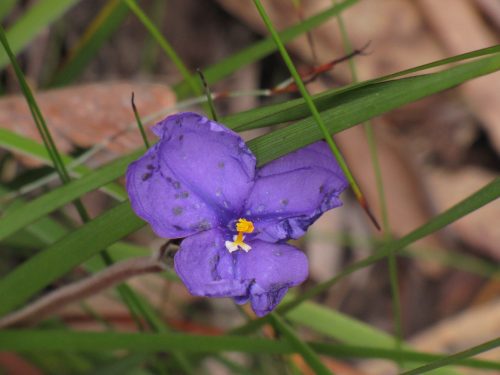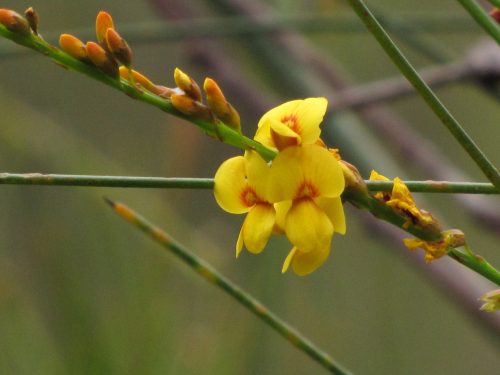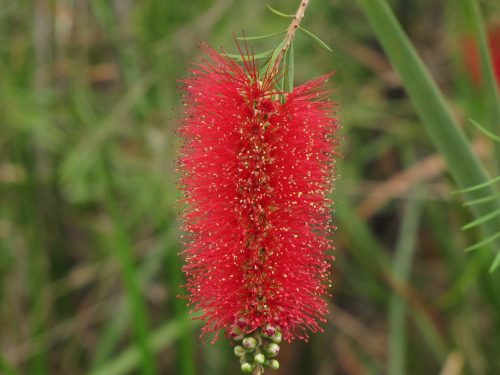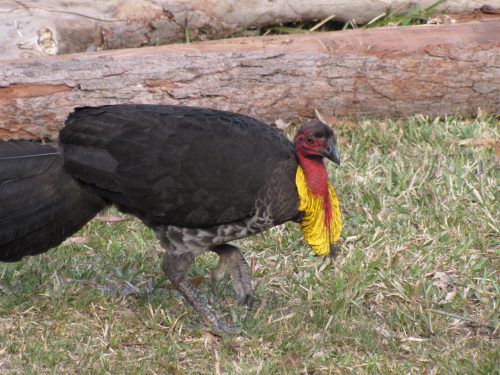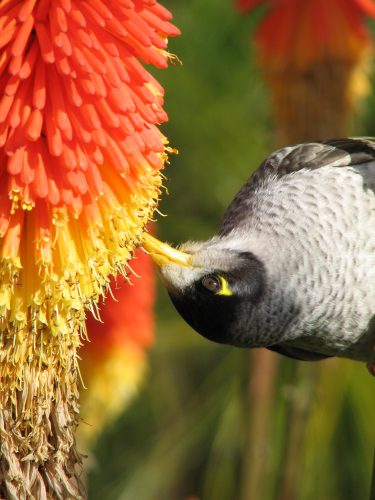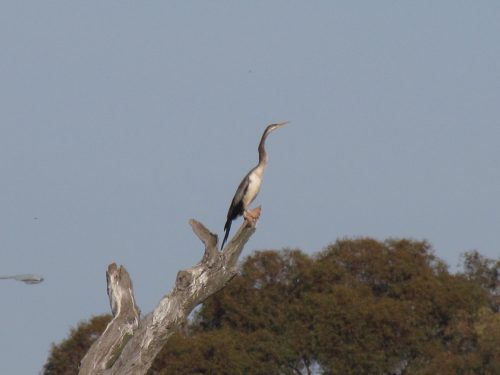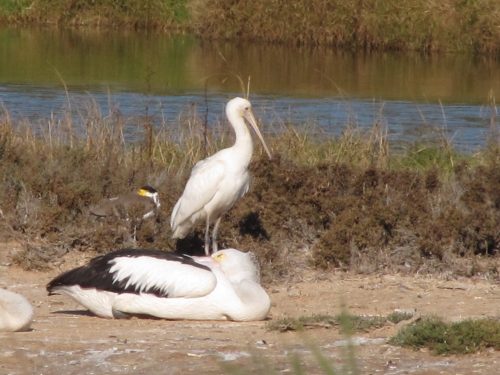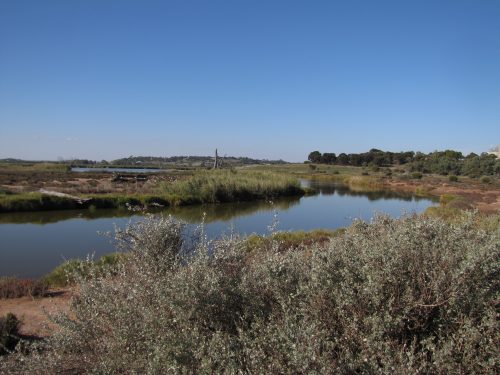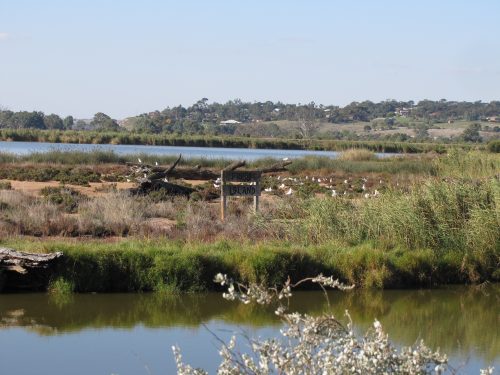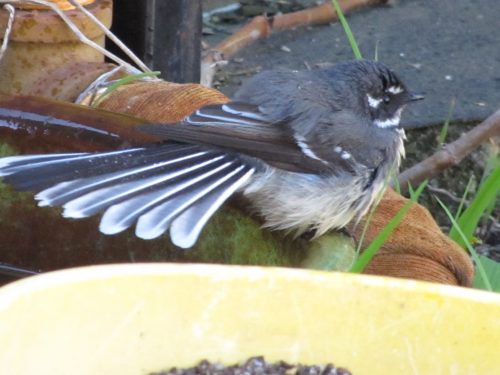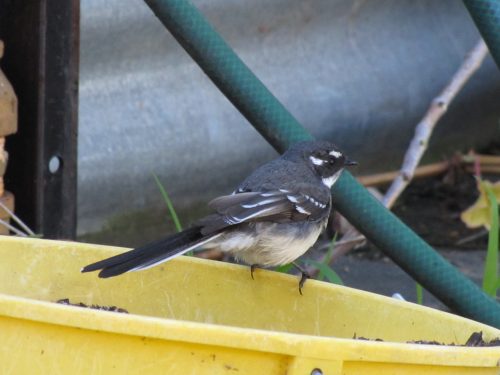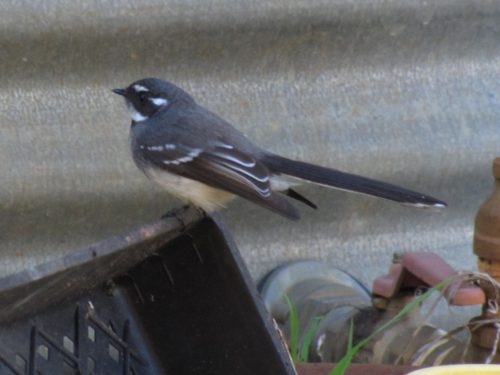Harassed by a turkey
Brushturkeys are not everyone’s favourite bird. In fact, many people regard them as pests. This is especially so when the turkeys scratch around in their gardens. I believe that they can make quite a mess of a garden when they are making a nest mound to incubate their eggs.
On our recent trip to Sydney to stay with family, my wife and I had several occasions where we spent time in the nearby Lane Cove National Park. It is a lovely park with plenty of picnic areas for visitors. As a bonus, the park is only a ten-minute drive from where we were staying.
On one visit to the national park, we were relaxing near the river. We had enjoyed a hectic few weeks with our grandchildren – ages 9 and 6 – and we were just looking for a quiet time of relaxation. One of the resident Brushturkeys, however, saw us as easy pickings. It wandered around our chairs looking for a handout or two. When this wasn’t forthcoming, it jumped on the picnic table and began to scrounge around our things on the table (see photo below).
It actually tried to unzip our cooler bag. It was obvious that it had done this before and knew exactly what to do. It was unsuccessful because I chased it off. A few minutes later, it returned, this time attempting to open our biscuit tin. This was a beautifully decorated tin my wife had bought recently at the fair run by the school our grandchildren attend. It began scratching at the lid of the tin, attempting to open it. I again chased it off before it could scratch the tin. It was also in danger of moving the tin off the table and the lid may have opened on impacting the ground.
Pests
As I said at the beginning, many people regard these birds as pests. I admit that they can be very troublesome. I have a different point of view. I really enjoy seeing these birds when we come to Sydney, for the following reasons:
- We don’t have the species in South Australia where I live. (There is an introduced population on Kangaroo Island off the SA coast.)
- The birds have character and attitude. In heaps – and sometimes this character spills over into being annoying.
- They are easy to photograph – they come up close to humans and are generally unafraid.
Good birding.
Trevor
An uncooperative Eastern Spinebill
Last week I had a close encounter with a very uncooperative Eastern Spinebill (see photo above) in the Ku Ring Gai Wildflowers Gardens in St Ives in Sydney. My wife and I enjoy visiting these gardens every time we come to stay with family in Sydney. Usually, there are many Australian native plants in flower. This year, however, it has been very dry in recent months in the Sydney region, so the flowering was not as good as we had expected. I still managed a few good photos, some of which are shown at the end of this post.
When the gardens are in full flower they can be wonderful. The numerous honeyeaters in this part of Australia flock to gardens and national parks like this and the birding can be wonderful. On this occasion, the bird life was very quiet and the Eastern Spinebill and the Little Wattlebird (see photo below) were the only honeyeater species present the day I visited.
Although I saw quite a few spinebills, the only photo I managed was the one above. The bird I managed a shot of turned its back at the crucial moment. It then flew off before I could get another photo. Such is the life of a nature photographer.
On my wanderings around the various paths in the gardens, I managed only a moderate list of birds. It was one of those slow birding days and not much was calling or coming into view of my binoculars. I managed a few photos of an Australian Raven (see photo below) and a very poor shot of two Laughing Kookaburras (not shown here because it was not in focus because they were too far away and then flew off before I could get closer).
Other birds seen or heard include:
- Striated Thornbill
- Eastern Yellow Robin
- Rainbow Lorikeet
- Sulphur-crested Cockatoo
- Australian Brushturkey
- Magpie Lark
- Eastern Whipbird
- Pied Currawong
Interestingly, I did not see any Australian Magpies on this visit. I usually see a few in the picnic areas. Nor did I see any of the resident Swamp Wallabies which often come out of the bush into the picnic areas as well.
More photos
Now for something different. Below, I have included some more photos taken in the gardens. These are some of the beautiful native plants flowering at the moment.
Enjoy.
Trevor
Get away, Turkey
Over recent weeks we have been staying with family in Sydney. During our four week stay, we have observed Australian Brush Turkeys on many occasions. One actually walked past their house on the footpath in Artarmon. Whenever we have visited various parks and gardens around this area, we have seen one or more turkeys. It is something we do not get to see where we live in South Australia, so it is something of a treat and special to us.
Last weekend I was driving my family to Little Athletics. I don’t normally get to see my grandson compete, so it was a special occasion. Just as we were about to get to the athletics track, I had to slow down for a turkey in the middle of the street. It was casually walking across the road, oblivious to the traffic which was thankfully quite light – our car was the only one at that point.
As the turkey strolled across the street, I was amused to see three Noisy Miners harassing it all the way. They obviously did not want the turkey in their territory. Perhaps they were nesting and were being overprotective of their eggs or young. The turkey was no threat to either eggs or young, so I don’t know why they were so annoyed by the turkey’s presence. Perhaps they were just being annoying for the sake of it.
Whatever the reason, it made me laugh to see the turkey ducking and weaving to get away from the miners’ pecks on its back. I didn’t get a photo because I was driving, and my camera was not within easy reach, anyway. I have included a photo above of a turkey taken in the nearby Lane Cove National Park a few days earlier. On that occasion, the turkey in the photo was harassing us as it attempted to scrounge some food from our picnic table. I’ll write about that in another post soon. The photo of a Noisy Miner below was taken some time ago in the Adelaide Botanic Gardens.
Other birds
For the rest of the afternoon, I was more interested in watching my grandson competing than in the local birdlife. There were plenty more Noisy Miners and Rainbow Lorikeets, several Australian Black-backed Magpies, a few Australian Ravens, one Magpie Lark and several Laughing Kookaburras. Three Crested Pigeons tried several times to settle on the grass to feed, only to be disturbed by the children running around the track, or moving across the oval to their next event. There was no sign of the Channel-billed Cuckoo I observed at the same location a week earlier.
Readers:
I would love to read about any funny incidents you have seen involving birds, I would be very happy for you to leave comments.
Good birding,
Trevor
Rocky Gully Wetlands, Murray Bridge
Earlier this year I spent a whole afternoon birding at various sites around my hometown of Murray Bridge here in South Australia. One of those sites was the Rocky Gully Wetlands on Mannum Road. I frequently drive past this wetland area, glancing at the lagoons as I drive, but not stopping. I need to change that and linger for a few minutes and take a much more careful note of the birds present. That action is probably safer than birding while driving, anyway.
Bush birds
On this occasion, there were plenty of birds present. Around the lagoons, there were quite a few smaller bush birds in the trees and shrubs that have been planted in the area. This included Red Wattlebirds, White-plumed Honeyeaters, Singing Honeyeaters and New Holland Honeyeaters. I heard a Grey Shrike-thrush calling and several times I heard the resident Superb Fairy-wrens twittering their soft calls to each other. Several Crested Pigeons were present and three Galahs were the only parrots seen at this location. Normally, I would expect to see Little Corellas and several kinds of Lorikeets here. They were absent on this visit.
Waterbirds
On the water of the lagoons or on the several islands I could see quite a few Grey Teal and Chestnut Teal, but interestingly, no Pacific Black Ducks which are very common in this area. A small number of Black-winged Stilts, Eurasian Coots and a solitary Purple Swamphen were seen, along with four Australian Pelicans, a White-necked Heron and a Great Egret. The egret was slowly wading in the shallows looking for a feed. It is a pity I didn’t get a good photo of this bird and its reflections in the water.
Of particular interest were the small group of both Royal and Yellow-billed Spoonbills. I always love seeing these species wherever I go birding. The most interesting sighting, however, was the count of twelve Australasian Darters. While this number is common in many parts of Australia, I have never seen so many in one spot in this region. Probably the most numerous species present were the Silver Gulls, with between 30 and 40 birds around the wetlands.
Further reading:
For each of the species mentioned in this post, I have written one or more articles about them on this site. To read them, go to the search facility in the top right-hand corner and type in the name of the species.
Newsletter:
I also invite you to subscribe to my occasional newsletter (see below the comments).
Good birding,
Trevor
Grey Fantail comes up close
One of the birds I would love to have resident in our garden is the Grey Fantail. We live on the outskirts of the rural city of Murray Bridge, about 80 km south-east of Adelaide, South Australia. We live on a five-acre block of land with about half of it being mallee scrub. Near the house, we have planted many native Australian bushes and trees. These attract a wide variety of birds to our garden.
Common and widespread
The Grey Fantail is featured in today’s photos (above and below). This member of the flycatcher family of birds is common and widespread in the district where we live, but I can’t claim it as a resident species. It generally only comes to visit us in the cooler months of the year, usually from April through to September. I am not sure why this is so, but there is quite some evidence to show that this species is partly migratory in parts of Australia. Perhaps it just likes to come visit us for a while each winter – to cheer us up.
Single birds only
When it does visit us, it tends to be only one bird. We rarely have two fantails present at once, though I have seen two together at a favourite birding spot about 3 kilometres to the west. I have just checked my database, and I have only ever recorded one bird at a time on our property over the last 12 years. (My database does not yet go back further than that – it’s a work in progress.)
Other fantails
The Grey Fantail is a close relative of the Rufous Fantail and the much loved and very common Willie Wagtail. This latter species is a resident bird on our property, but the Rufous Fantail is a rare species in South Australia. This is a pity because it is one of my favourite birds and I have only seen one on a handful of occasions. Every time I visit my family in Sydney I live in hope of seeing one – and of getting a good set of photos. I still live in hope.
Photos
Despite it being common in many parts of Australia, I do not have many photos of the Grey Fantail. Its habit of constantly being on the move makes photography of this species a little more challenging than many species. The shots shown today were taken a few weeks ago while my wife and I were having lunch on our back veranda. The fantail came up quite close to where we sat, fluttering around and on the move all the time. I had to anticipate where it was going to perch long enough to press the shutter on my camera. While the composition is not great, and the background distracting (and quite awful), I am still pleased to have managed these photos.
Now I need to find an obliging Rufous Fantail to photograph.
Good birding,
Trevor
Further reading:
- Grey Fantail – from the Birds in Backyards website – plenty more information here.
- A brave Willie Wagtail
- A feisty Willie Wagtail
- Grey Fantail at last
